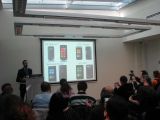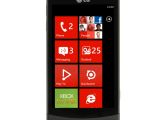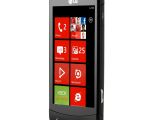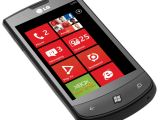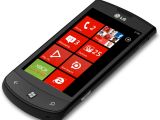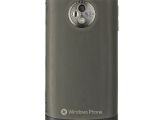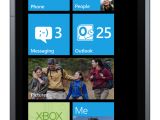One of the first East European countries to adopt the newly announced Windows Phone 7 is Romania. It seems that lately, the country was the target of some of the most important players in the smartphone market. Important devices have been launched here, long time before they reached other markets in Europe, like Dell Streak or Samsung Galaxy S.
During the event held today at its Bucharest headquarters, Microsoft officially announced the introduction of the Windows Phone 7 OS, together with a set of four devices, which will be available in Romania by the end of the year.
Perhaps Romanians will be happy to be able to get themselves one of the four models running Windows Phone 7 OS, but they will soon find out that some of the features included will not be supported locally.
Two of the highlighted features that the developers are so proud of, Zune and XboxLive will not be available for people living in Romania. Even though you will pay for the device, you won't be able to download anything through these services, unless you're using an account listed in another country.
Still, Microsoft said that they are working on the matter and, even though they were unable to disclose a certain timeline, both services, Zune and XboxLive will become available in Romania too.
Further, the long list of unsupported features is a little bit shorter than I anticipated. Let's not forget that Android and iPhone had also long list of “NOT supported” things.
Well, just like its competitors, Microsoft decided to announce its new OS even though this seems to be a work in progress.
So, before you jump in and decide you wanna replace your Android/iPhone smartphone here are the things NOT supported by Windows Phone 7 yet: no support for microSD card, no support for USB storage mode, no Silverlight support for browser, no copy/paste, no tethering support, no mobile hotspot support, no file manager support, no multitasking (or limited multitasking feature).
Besides the copy / paste function, which has already been announced for the first months of 2011, some of the unsupported features will also be introduced, but like I said before it's a work in progress and Microsoft officials said that they have no timelines whatsoever.Maybe some of you already noticed, but most of the newly announced WP7 smartphones don't support microSD cards. The reason behind the issue is the fact that the operating system doesn't support natively removable memory cards.
Windows Phone 7 only supports non-removable memory cards, which means that some devices will come with a special high performance SD card in the sales package, which will extend the internal memory of the phone by simply combining them. This special SD card works differently than the rest of the memory cards, so users should not remove or pull it out.
It seems that handset manufacturers already know about this, as Samsung and Dell, both launched WM7 smartphones (Samsung Focus and Dell Venue Pro) that also include a memory card slot.
Windows Phone 7 does not feature a file manager (yes, there's no File Explorer), so you won't be able to use the phone as a mass storage device. You cannot save any file that's not a movie, a picture or a document on the phone. If you receive a .zip file on your email, you won't be able to save it.
Basically, your Windows Phone 7 smartphone will never be a storage device, if you want one buy an USB stick. Also, your WM7 phone will be recognized by the PC only through the Zune software and only as a Media collection (music, pictures, video).
Regarding the multitasking feature, the engineers from Microsoft approached the problem in a very different way. First of all, it's true, Windows Phone 7 doesn't support the multitasking feature like it appears on the Android or iPhone devices.
The Microsoft's multitasking feature is called "smart multitasking" and allows some apps to run in the background, such as Internet browser, e-mail synchronization, music player, and pictures upload, everything optimized to save as much battery life as possible. This sounds very limited, but I'm sure Microsoft will deal with it in some way, sooner or later.
At the moment the function is present under the form of Notifications, which means that when an app that you used before is updated (like when you received a message on your Facebook account or an email), you get a notification, so you can quickly go directly into that application. You can also use the Back button to go to an application that you previously used.I was surprised to discover that the integrated browser, which is mostly based on the desktop version of Internet Explorer 9, does not feature Silverlight support. Yes, there's a special application for YouTube, so you can watch clips, but Silverlight (Microsoft's complex equivalent of Flash) is not implemented yet.
Microsoft officials stated that they will announce the next updates the same day they are launched. This seems more like a Blizzard-like approach, but I guess we must live with that.
Windows Phone 7 UI is different than any other's OS on the market. Microsoft started the development of WM7 from the scratch and it shows. The whole UI is based on tabs, much like Symbian^3, only these are more like squares and are called Hubs.
There's little to no customization at all, as Microsoft said they took the responsibility of a single UI which should not be changed drastically by the user. Of course, you will be able to add more Hubs, such as Contacts, Bookmarks and others. Carriers that will probably embed some of their own content will also be able to include special Hubs with their own services and applications.
One of the major things included is the Microsoft Office package, which seems to cope perfectly with the operating system. From what I've seen this is one of the best implementation of a document reader. You can do just about anything with a document file, from synching it with Microsoft's cloud service SkyDrive or Windows Live account, or use the SharePoint Server business feature.Officials stated that Microsoft plans to launch four Windows Phone 7 devices by the end of the year, which will be available through some of the major carriers in Romania: Orange, Vodafone and Cosmote. These four devices are the same that will probably hit the shelves worldwide: LG Optimus 7, HTC 7 Mozart, Samsung Omnia 7 and HTC HD7.
Developers that want to contribute to the operating system's marketplace will be able to download Microsoft's Visual Studio, which is free and mostly targets enthusiasts. For a more in-depth approach, those interested can download Microsoft Visual Studio Pro, which has more features.
Unfortunately, Romanian developers won't be able to enlist their apps, as the marketplace is not available in Romania for the moment.
Stay tuned for more updates about the new Windows Phone 7 operating system. An upcoming review is also in the works.
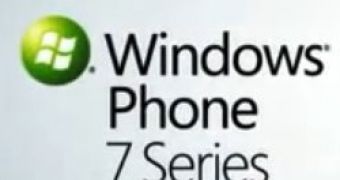
 14 DAY TRIAL //
14 DAY TRIAL // 
